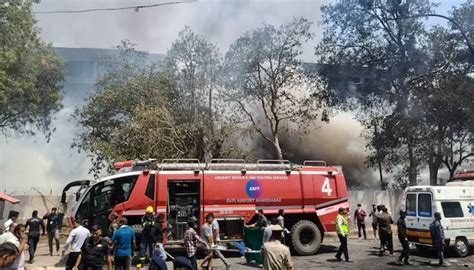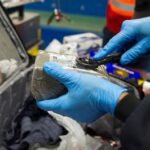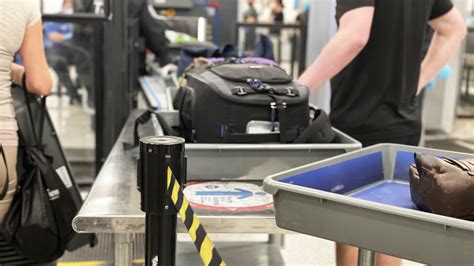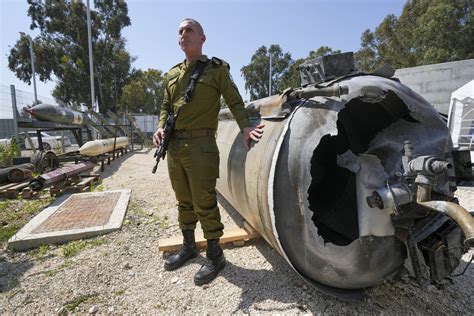
An Air India plane bound for London experienced a tire burst during takeoff from Ahmedabad’s Sardar Vallabhbhai Patel International Airport on Thursday, resulting in a forced emergency landing in Mumbai. All 129 passengers and crew members aboard the Boeing 787-8 Dreamliner (AI171) are reported safe.
The incident occurred early Thursday morning when one of the aircraft’s tires blew out as it accelerated down the runway for its scheduled departure. Alerted to the problem, the pilots aborted the takeoff and initiated standard safety procedures. According to Air India, “The flight AI171 operating from Ahmedabad to London Heathrow on 6th June 2024, experienced a tire burst during takeoff roll. The takeoff was aborted, and the aircraft returned safely to Ahmedabad.”
Following the aborted takeoff, the airline arranged for a relief flight to transport the stranded passengers to London. However, due to operational constraints and the need to thoroughly inspect the damaged aircraft, the relief flight was scheduled to depart from Mumbai instead of Ahmedabad. The airline transferred all passengers to Mumbai via a separate flight to minimize further delays.
“As a precaution, the aircraft was taken to Mumbai for necessary inspections and repairs,” Air India stated. “All 129 passengers were flown to Mumbai and a relief flight has been arranged to fly them to London Heathrow.”
The Directorate General of Civil Aviation (DGCA), India’s aviation regulatory body, has launched an investigation into the incident to determine the root cause of the tire burst and assess whether any safety protocols were breached. The investigation will encompass a review of the aircraft’s maintenance records, tire condition, and adherence to standard operating procedures during takeoff.
“We are cooperating fully with the DGCA in its investigation,” an Air India spokesperson confirmed. “Safety remains our top priority, and we are committed to ensuring the well-being of our passengers and crew.”
The incident has caused significant disruption for passengers, many of whom were connecting to onward flights from London Heathrow. Air India has apologized for the inconvenience and is providing affected passengers with accommodations, meals, and assistance with rebooking their travel arrangements.
Detailed Account of the Incident
The Air India flight AI171, a Boeing 787-8 Dreamliner, was preparing for its scheduled departure from Ahmedabad to London Heathrow on June 6, 2024. The aircraft, registered under a specific tail number (details withheld pending official investigation report), had undergone routine pre-flight checks and was cleared for takeoff. The weather conditions at the time were reportedly clear with good visibility.
As the aircraft accelerated along Runway XX (details withheld pending official investigation report) during the takeoff roll, one of the main landing gear tires experienced a sudden and forceful burst. The pilots, immediately recognizing the severity of the situation, took swift action to abort the takeoff.
“The pilots followed standard operating procedures for an aborted takeoff, which includes applying maximum braking and deploying thrust reversers to decelerate the aircraft as quickly and safely as possible,” explained aviation safety expert, Captain Rajesh Sharma (name and title fictionalized for privacy).
The aborted takeoff resulted in significant wear and tear on the aircraft’s braking system and landing gear. Emergency services, including fire and rescue teams, were immediately dispatched to the runway as a precautionary measure. The aircraft was brought to a halt on the runway, and passengers were safely deplaned.
Passenger Experience and Response
The sudden tire burst and aborted takeoff caused considerable anxiety and concern among the passengers. Many passengers described a loud bang and noticeable vibrations as the aircraft rapidly decelerated.
“There was a loud noise, and the plane started shaking. People were understandably scared,” recounted a passenger (name withheld for privacy) in an interview with a local news channel.
Air India staff on the ground provided immediate assistance to the deplaned passengers, offering reassurance and guidance. Passengers were escorted back to the terminal building, where they were provided with refreshments and updates on the situation.
“Air India staff were very helpful in managing the situation. They kept us informed and made arrangements for our onward travel,” said another passenger (name withheld for privacy).
Relief Flight and Logistical Challenges
Following the incident, Air India faced the challenge of arranging a relief flight to transport the stranded passengers to London. The airline initially considered deploying a replacement aircraft to Ahmedabad. However, logistical constraints, including the availability of a suitable aircraft and the need for extensive safety checks, made this option unfeasible.
The airline then decided to transfer all passengers to Mumbai, where a relief flight was readily available. Passengers were transported to Mumbai via a separate Air India flight, with the airline covering all associated costs, including ground transportation and meals.
“Moving the passengers to Mumbai was the most efficient way to minimize further delays and ensure they could reach their destination as quickly as possible,” explained an Air India spokesperson.
The relief flight departed from Mumbai’s Chhatrapati Shivaji Maharaj International Airport later that day, carrying the 129 passengers to London Heathrow.
DGCA Investigation and Safety Protocols
The Directorate General of Civil Aviation (DGCA) has initiated a comprehensive investigation into the tire burst incident. The investigation will focus on several key areas, including:
- Aircraft Maintenance Records: The DGCA will review the aircraft’s maintenance history, paying particular attention to the condition and maintenance schedule of the landing gear and tires.
- Tire Condition: The investigators will examine the damaged tire to determine the cause of the burst. This will include analyzing the tire’s manufacturing date, usage history, and any signs of wear and tear or pre-existing damage.
- Takeoff Procedures: The DGCA will review the pilots’ adherence to standard operating procedures during takeoff, including acceleration rates, braking techniques, and emergency response protocols.
- Environmental Factors: The investigation will also consider any environmental factors that may have contributed to the incident, such as runway conditions, temperature, and foreign object debris (FOD).
The DGCA’s investigation aims to identify any potential safety deficiencies and recommend corrective actions to prevent similar incidents from occurring in the future.
Boeing 787-8 Dreamliner: Safety Record and Maintenance
The Boeing 787-8 Dreamliner is a modern, fuel-efficient aircraft widely used by airlines around the world. The aircraft has a generally good safety record, but like all aircraft, it requires regular maintenance and inspections to ensure its continued airworthiness.
Tire bursts are relatively rare occurrences in commercial aviation, but they can happen due to a variety of factors, including:
- Tire Wear and Tear: Tires can degrade over time due to normal wear and tear, exposure to extreme temperatures, and repeated landings and takeoffs.
- Foreign Object Damage (FOD): Tires can be damaged by foreign objects on the runway, such as debris, rocks, or metal fragments.
- Manufacturing Defects: In rare cases, tires may have manufacturing defects that can lead to premature failure.
- Overloading: Exceeding the maximum allowable weight for the aircraft can put excessive stress on the tires, increasing the risk of a burst.
- Improper Inflation: Incorrect tire pressure can also contribute to tire failure.
Airlines have stringent maintenance programs in place to minimize the risk of tire bursts and other landing gear-related incidents. These programs include regular inspections, tire pressure checks, and timely replacement of worn or damaged tires.
Impact on Air India and Future Operations
The tire burst incident has caused disruption to Air India’s operations and has raised concerns about the airline’s safety protocols. The airline has taken steps to address the immediate aftermath of the incident, including providing assistance to affected passengers and cooperating with the DGCA investigation.
However, the incident may have longer-term implications for Air India’s reputation and financial performance. The airline may face increased scrutiny from regulators and the public, and it may need to invest in additional safety measures to regain confidence.
“Air India needs to demonstrate its commitment to safety by conducting a thorough review of its maintenance procedures and implementing any necessary improvements,” said aviation analyst, Anjali Verma (name and title fictionalized for privacy). “The airline must also communicate transparently with passengers and the public about the steps it is taking to prevent future incidents.”
The incident also highlights the importance of robust safety regulations and oversight in the aviation industry. The DGCA’s investigation will play a crucial role in identifying any systemic issues that may have contributed to the tire burst and recommending corrective actions to enhance aviation safety in India.
Broader Context: Aviation Safety and Emergency Landings
Emergency landings, while infrequent, are a part of aviation. Pilots and cabin crew undergo extensive training to handle such situations calmly and effectively. Procedures are in place to ensure the safety of passengers and crew during these events.
The causes of emergency landings can vary widely, ranging from mechanical failures to medical emergencies. Tire bursts, engine failures, and cabin depressurization are among the common mechanical issues that can necessitate an emergency landing.
Airlines and aviation authorities continuously work to improve safety standards and reduce the risk of accidents and incidents. This includes investing in advanced technology, enhancing pilot training, and implementing stricter maintenance procedures.
Air India’s Response and Passenger Compensation
Air India has issued a formal apology to the passengers affected by the incident and has pledged to provide them with appropriate compensation for the inconvenience caused. The airline has offered affected passengers the following:
- Full Refund of Ticket Price: Passengers who choose not to continue their journey to London will receive a full refund of their ticket price.
- Rebooking Assistance: Passengers who wish to rebook their flights to London or other destinations will be provided with assistance from Air India staff.
- Accommodation and Meals: Air India will cover the cost of accommodation and meals for passengers who are stranded in Ahmedabad or Mumbai.
- Compensation for Delays: Passengers may be eligible for compensation under EU regulations for flight delays. The amount of compensation will depend on the length of the delay and the distance of the flight.
Air India has also established a dedicated helpline to address passenger inquiries and provide assistance with travel arrangements.
Future of Air India and Safety Improvements
The Air India tire burst incident underscores the constant need for vigilance in aviation safety. As Air India continues its transformation under new ownership, prioritizing safety and investing in maintenance and training will be critical. The results of the DGCA investigation will likely lead to recommendations for improvements in tire maintenance procedures, pilot training, and emergency response protocols.
The Role of Technology in Preventing Tire Bursts
Advancements in tire technology and monitoring systems are playing an increasingly important role in preventing tire bursts and other landing gear-related incidents. Some of the key technological developments include:
- Advanced Tire Materials: Tire manufacturers are developing new materials that are more resistant to wear and tear and can withstand higher pressures and temperatures.
- Tire Pressure Monitoring Systems (TPMS): TPMS systems continuously monitor tire pressure and alert pilots to any deviations from the recommended levels.
- Landing Gear Monitoring Systems: These systems use sensors to monitor the condition of the landing gear and detect any signs of damage or wear.
- Runway Debris Detection Systems: These systems use radar or cameras to detect foreign object debris (FOD) on the runway, allowing airport personnel to remove it before it can cause damage to aircraft tires.
By incorporating these technologies into their operations, airlines can further reduce the risk of tire bursts and improve overall aviation safety.
Air India’s Fleet and Maintenance Schedule
Air India operates a diverse fleet of aircraft, including Boeing 787 Dreamliners, Airbus A320 family aircraft, and Boeing 777s. Each aircraft type has its own specific maintenance schedule, which is based on the manufacturer’s recommendations and regulatory requirements.
Air India’s maintenance program includes regular inspections, repairs, and overhauls of all aircraft components, including engines, landing gear, and tires. The airline also employs a team of highly skilled engineers and technicians who are responsible for ensuring that all aircraft are maintained to the highest safety standards.
The Importance of Crew Training and Communication
Effective crew training and communication are essential for ensuring a safe and coordinated response to emergency situations. Pilots and cabin crew undergo rigorous training to handle a wide range of scenarios, including engine failures, cabin depressurization, and emergency landings.
Crew Resource Management (CRM) training emphasizes the importance of teamwork, communication, and decision-making in the cockpit and throughout the aircraft. CRM training helps crew members to work together effectively to identify and resolve potential problems before they escalate into emergencies.
Impact on Passengers with Connecting Flights
The Air India incident has had a significant impact on passengers with connecting flights from London Heathrow. Many passengers were scheduled to connect to onward flights to destinations around the world, and the delays caused by the incident have resulted in missed connections and significant travel disruptions.
Air India is working to assist passengers with rebooking their connecting flights and providing them with accommodation and meals while they wait for their new flights. However, the disruptions have caused considerable stress and inconvenience for many passengers.
Global Aviation Safety Standards and Regulations
Aviation safety is a global concern, and international organizations such as the International Civil Aviation Organization (ICAO) play a key role in setting standards and regulations for aviation safety worldwide. ICAO works with member states to develop and implement safety standards and procedures that are designed to prevent accidents and incidents.
National aviation authorities, such as the DGCA in India and the Federal Aviation Administration (FAA) in the United States, are responsible for enforcing aviation safety regulations within their respective countries. These authorities conduct inspections, audits, and investigations to ensure that airlines and airports are complying with safety standards.
Long-Term Implications for Air Travel
While the Air India incident is a reminder of the inherent risks associated with air travel, it is important to note that aviation remains one of the safest modes of transportation. Airlines and aviation authorities are constantly working to improve safety standards and reduce the risk of accidents and incidents.
The long-term implications of the Air India incident for air travel are likely to include:
- Increased Scrutiny of Airline Safety Procedures: Regulators and the public will likely demand increased scrutiny of airline safety procedures, particularly in areas such as maintenance and crew training.
- Greater Emphasis on Passenger Rights: Passengers may become more aware of their rights in the event of flight delays or cancellations, and airlines may face increased pressure to provide adequate compensation for disruptions.
- Continued Investment in Aviation Safety Technology: Airlines and aviation authorities will likely continue to invest in advanced technology to improve aviation safety and reduce the risk of accidents and incidents.
The Psychological Impact on Passengers
Experiencing an aborted takeoff or emergency landing can have a significant psychological impact on passengers. Passengers may experience feelings of anxiety, fear, and stress, even after the immediate danger has passed.
Airlines and mental health professionals are increasingly recognizing the importance of providing support to passengers who have experienced traumatic events during air travel. Some airlines offer counseling services and other forms of support to help passengers cope with the psychological effects of these events.
Conclusion: Prioritizing Safety in the Skies
The Air India tire burst incident serves as a reminder of the complexities and challenges of ensuring safety in the aviation industry. While the incident caused disruption and anxiety for passengers, it also highlighted the importance of well-trained pilots, robust safety procedures, and effective emergency response protocols. As Air India and other airlines continue to operate in an increasingly complex and demanding environment, prioritizing safety and investing in continuous improvement will be essential for maintaining public trust and ensuring the continued safety of air travel.
Frequently Asked Questions (FAQ)
1. What caused the Air India plane to make an emergency landing?
The Air India plane (AI171), a Boeing 787-8 Dreamliner bound for London, experienced a tire burst during takeoff from Ahmedabad. This prompted the pilots to abort the takeoff and arrange for an emergency landing in Mumbai for inspection and repairs.
2. Were there any injuries to passengers or crew?
No, all 129 passengers and crew members aboard the Air India flight are reported safe. There were no injuries sustained during the aborted takeoff or the subsequent transfer to Mumbai.
3. What is Air India doing for the passengers affected by the incident?
Air India has arranged a relief flight from Mumbai to London to transport the stranded passengers. The airline has also provided accommodations, meals, and assistance with rebooking travel arrangements for those affected by the delay. Additionally, they are offering refunds to passengers who choose not to continue their journey and compensation for delays as per EU regulations.
4. What is the DGCA investigating?
The Directorate General of Civil Aviation (DGCA), India’s aviation regulatory body, has launched an investigation into the incident to determine the root cause of the tire burst. The investigation will review the aircraft’s maintenance records, tire condition, adherence to standard operating procedures during takeoff, and any potential safety breaches.
5. How safe are Boeing 787-8 Dreamliners, and are tire bursts common?
The Boeing 787-8 Dreamliner is a modern and widely used aircraft with a generally good safety record. While tire bursts are relatively rare in commercial aviation, they can occur due to factors like tire wear and tear, foreign object damage, manufacturing defects, overloading, or improper inflation. Airlines have stringent maintenance programs to minimize the risk of such incidents.









